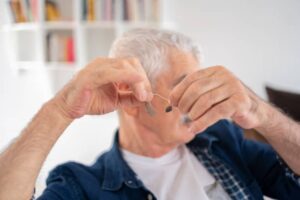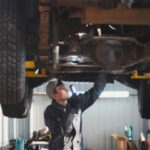Hearing Test Adelaide: Going for a Comprehensive Check
If you’re worried about your hearing, a comprehensive hearing test Adelaide will allow you to see how severe the problem is. This article will discuss the tests that make up a comprehensive hearing evaluation.
Pure-tone testing, also known as air conduction testing, involves listening to tones through earphones and establishing the softest sounds you can hear at different pitches or frequencies, called your hearing thresholds.
Tone Test
 Pure tone audiometry is one of the most widely used and recognised hearing tests. It is a behavioural test that requires a patient to be seated in a soundproof booth with a pair of high-quality headphones. The audiologist will emit sounds at different frequencies and volumes into the patient’s ears and ask them to indicate when they can hear the sound. The audiologist can determine the extent of hearing loss by recording the softest sound that the patient can listen to, known as their threshold.
Pure tone audiometry is one of the most widely used and recognised hearing tests. It is a behavioural test that requires a patient to be seated in a soundproof booth with a pair of high-quality headphones. The audiologist will emit sounds at different frequencies and volumes into the patient’s ears and ask them to indicate when they can hear the sound. The audiologist can determine the extent of hearing loss by recording the softest sound that the patient can listen to, known as their threshold.
The audiologist will start the test with a tone well above the hearing threshold and gradually reduce it in 10 dB increments until they cannot hear it at all. It reveals the threshold for each frequency and is recorded on a chart known as an audiogram. The audiologist will also record the results for each ear individually.
Once the hearing thresholds have been recorded, the audiologist will compare them to reveal discrepancies between each ear. For example, if your right ear has a higher threshold than your left ear, you may have a symmetrical hearing loss and need hearing aids on both sides. A higher left ear threshold may indicate trouble with lower frequencies, such as men’s voices and thunder. A higher right ear threshold may indicate trouble hearing middle frequencies, such as those in conversation, or high-frequency tones, like bird songs and children’s voices.
Speech Test
The Speech Test is integral to your comprehensive hearing test Adelaide because it reveals how well you can hear two-syllable words. It helps our Green Valley audiologist determine whether you have wax or fluid buildup blocking your outer or middle ear or if you have a loss in the sensory cells of your hearing organ.
During this part of the test, you’ll sit in the sound booth and signal when you hear certain sounds by raising your hand or pushing a button. You’ll also be asked to repeat the sounds you hear so we can see how accurately you recognise them. It allows us to determine your speech reception threshold (SRT), the lowest volume of a spoken word you can understand 50 per cent of the time.
Once we have your SRT, our audiologist can compare it to the SRT of other people and use the results to create a speech audiogram. The graph shows your ability to understand speech in quiet and noisy environments.
Using a word recognition score, our audiologist may also test your ability to discriminate between speech sounds. It involves presenting a series of single-syllable words that you must repeat aloud and rating your success with them. This score is then used to rate your sensitivity to speech in noise (SIN), which is why many seek a hearing health professional.
Auditory Brainstem Response (ABR) Test
The ABR evaluation measures how well your child’s ears and the brain pathways for hearing are working. It is commonly done with infants, toddlers, or children who cannot cooperate with a standard screening test in a sound booth. It is a painless and non-invasive test.
Small electrodes are placed on your child’s head and earlobes (or on their mastoid bone). They will hear clicks through earphones. Then, the computer program will record the response to sounds and generate a waveform that can be seen on the screen.
Some studies have shown that a child’s ABR results may correlate with cognitive ability. For example, faster ABR latency has been reported for introverts versus extroverts.
Otoacoustic Emissions (OAE) Test
Otoacoustic emissions (OAE) tests evaluate the inner ear, specifically the cochlea. During this test, a probe is placed in the ear canal, and sounds are played to stimulate hair cells inside the cochlea to produce a response similar to an echo. The search then records the response. This type of comprehensive hearing test Adelaide helps diagnose if the ear has trouble detecting sound, which is often seen in certain types of hearing loss. This test is commonly used in newborn hearing screening protocols and for small children.





Comments are Disabled